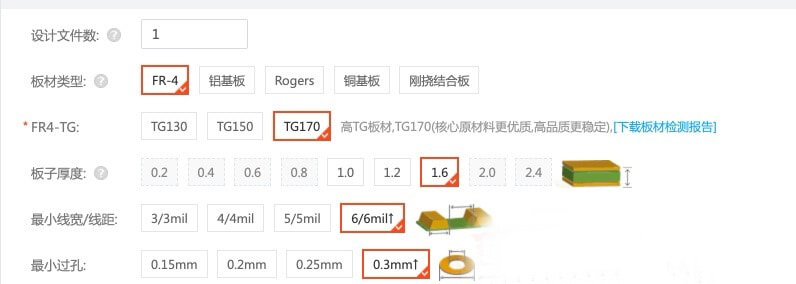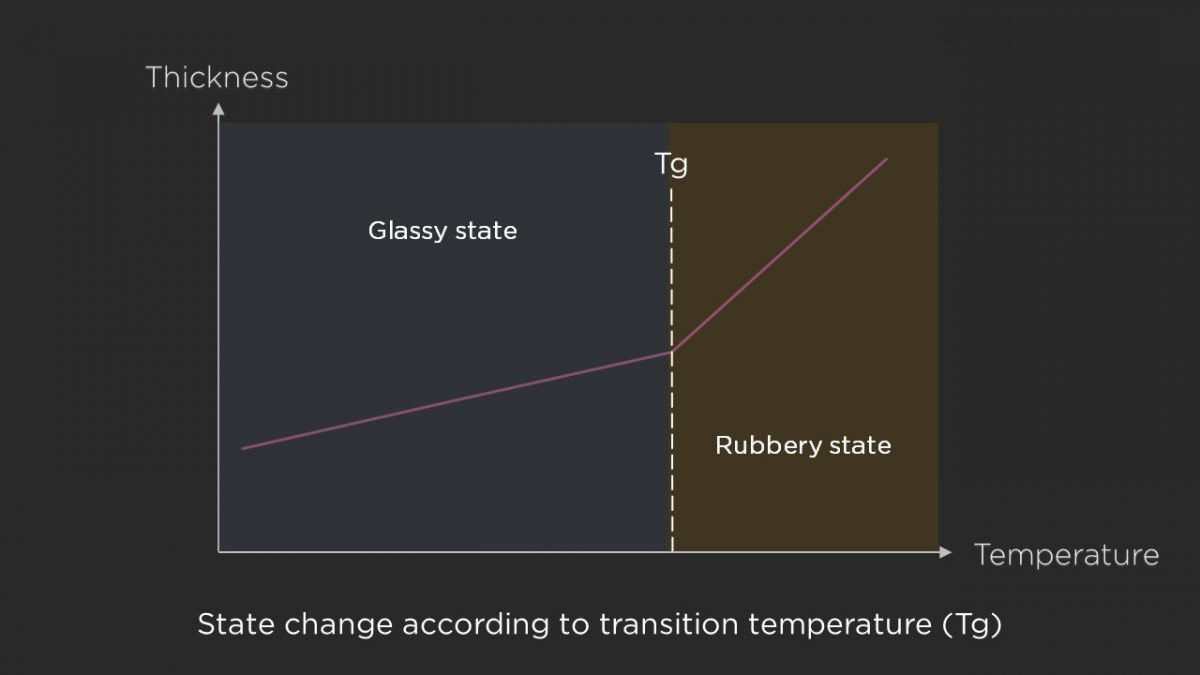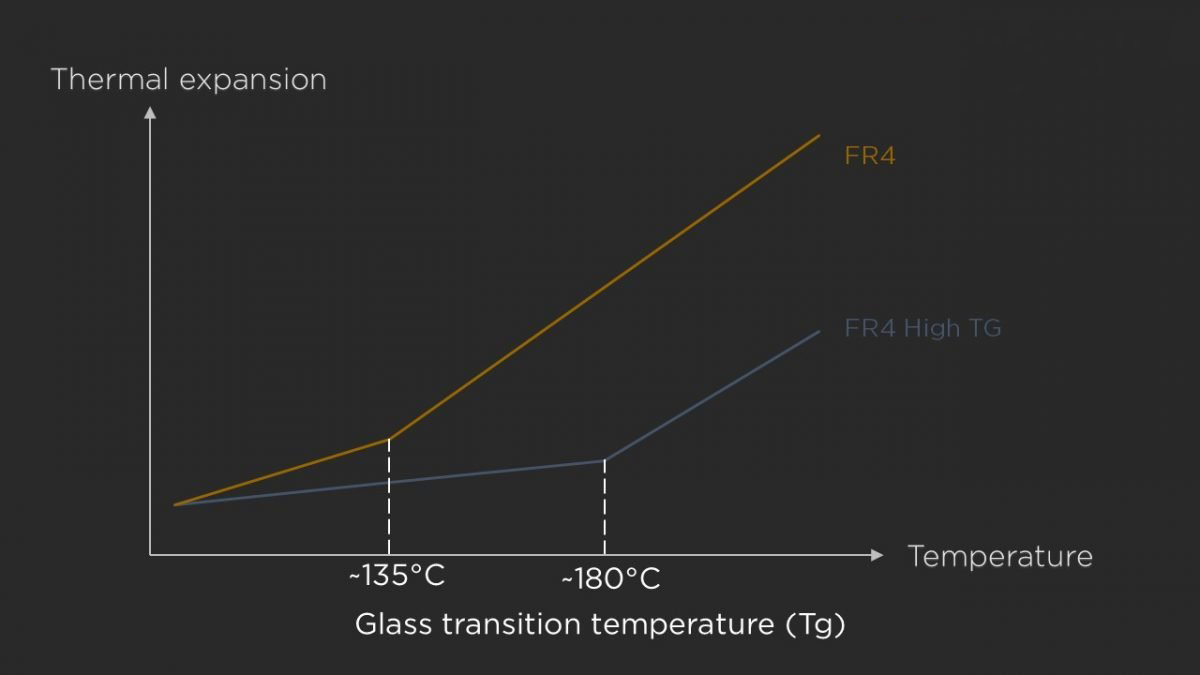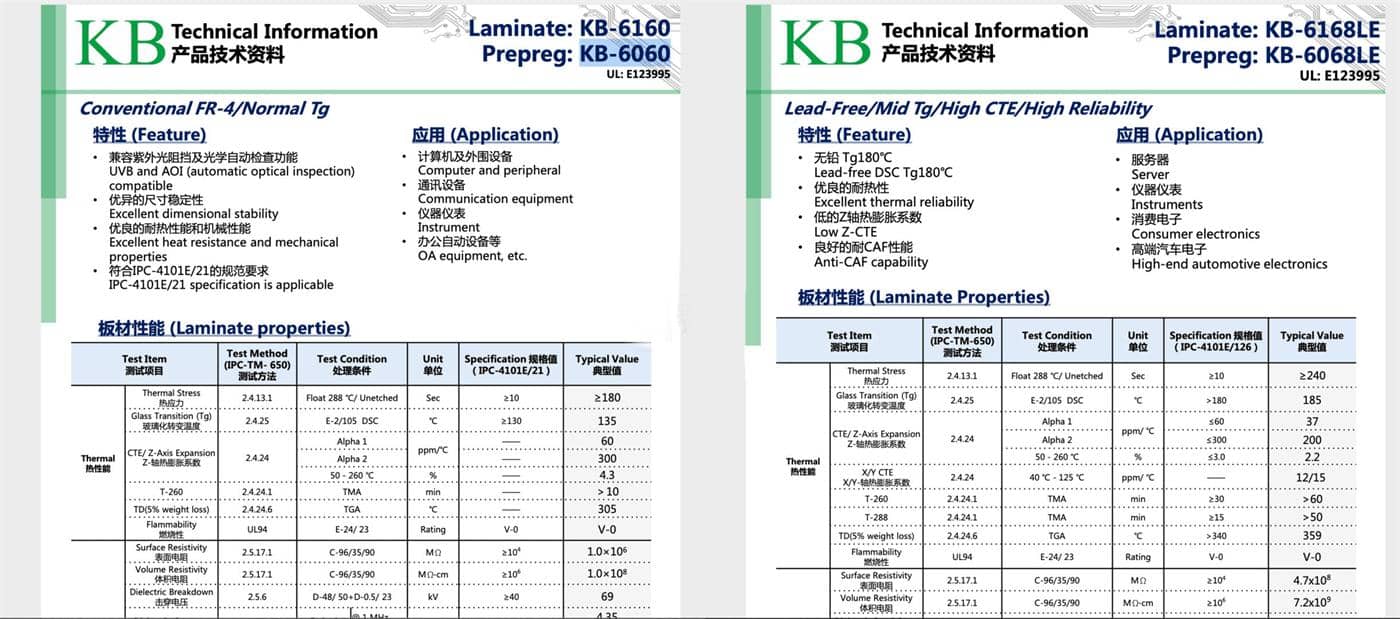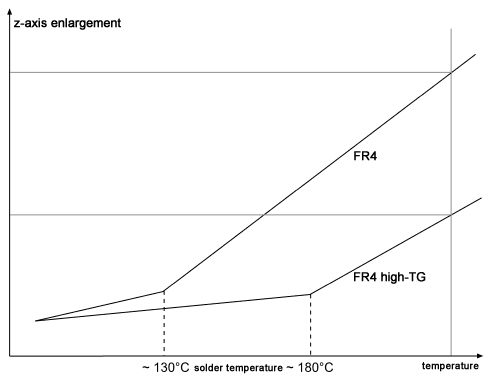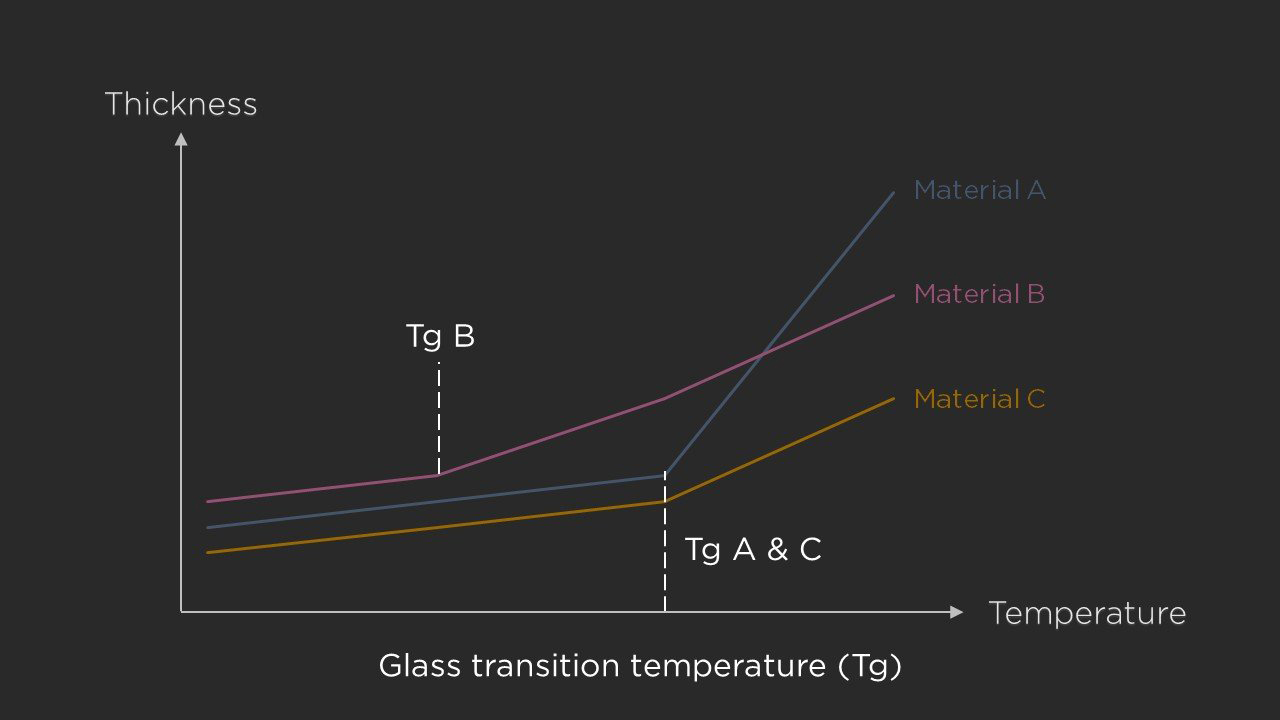
When we request a quotation from the PCB supplier or order PCB prototype manufacturing on the pricing page of the circuit board manufacturer, there will be a Tg value of the PCB board that needs to be provided or selected. Different Tg values will affect the final PCB prototype manufacturing costs. In other words, you have to pay for the Tg value of the PCB board. So, what is the Tg value, and under what circumstances do you have to pay extra for High Tg sheets?
Know the Tg value of PCB substrate
The Tg value is the most common grade index used to classify FR-4 substrates in the PCB manufacturing industry. It is generally believed that the higher the Tg value, the higher the reliability of the sheet.
Tg135° sheet is used for motherboards, consumer electronics, etc.
The Tg180° sheet is used for CPU boards, DDR3 memory substrates, IC packaging substrates, and so on.
The role of PCB substrates for printed circuit boards is as important as the role of printed circuit boards for electronic devices.
Classification of PCB substrate
According to the nature of PCB substrates, they can be divided into organic substrates and inorganic substrates.
The organic substrate comprises multiple paper layers impregnated with phenolic resin or non-woven or glass cloth layers impregnated with epoxy resin, polyimide, cyanate ester, and BT resin. The purpose of these substrates depends on the physical characteristics required by the PCB application, such as operating temperature, frequency, or mechanical strength.
Inorganic substrates mainly include ceramics, aluminum, iron, copper, etc. The purpose of these substrates is generally for heat dissipation.
The board used by Rigid PCB is an organic substrate, such as FR-4 epoxy glass fiber cloth substrate, which uses epoxy resin as the adhesive and electronic grade glass fiber cloth as the reinforcing material.
What is the Tg value?
Tg is the abbreviation of Glass Transition Temperature.
We know that FR-4 uses epoxy resin as the adhesive, and a critical characteristic parameter of the resin material is the glass transition temperature (Tg). The printed circuit board must be flame-resistant and can only soften when the temperature reaches a certain temperature point, and it is not allowed to burn. Therefore, the Tg value is the critical temperature when the PCB substrate melts from a solid state to an elastic fluid.
- The higher the Tg, the higher the temperature requirement of the board during pressing, and the pressed board will be more rigid and more brittle. But, this will affect the quality and electrical characteristics of the mechanical drilling (if any)in the subsequent process.
- Tg value is the highest temperature (℃) at which the PCB base material maintains rigidity.
- The Tg of PCB substrate is divided into three grades: the Tg value of standard FR-4 substrate is 130°, 140°; the Tg value of High-Tg FR-4 substrate is greater than 170°, and the medium Tg value is 150°. The Tg value of PI material used in flexible circuit boards can reach 400°.
Below is the Tg of different PCB base materials:
| Base material | PREPREG | FR2 | CEM1 | CEM3 | FR4 | FR4 High Tg | Teflon | Polyimide |
|---|---|---|---|---|---|---|---|---|
| Tg (°C) | – | 30 | 60/90 | 125 | 135 | 150/170/210 | 160 | >250 |
Benefits of high-Tg substrates
The Tg value of the PCB substrate is related to the dimensional stability of the PCB board. The higher the Tg value, the better the temperature resistance of the PCB, and the better its mechanical and electrical properties. Especially in the manufacture of lead-free PCBs, high Tg boards have been widely used.
High Tg materials have the following properties:
- Resistance to high temperatures
- Long delamination durability (aging of materials to consider for safety reasons)
- Low thermal expansion
- Excellent PTH reliability
- Good mechanical properties
- High temperature durability
- High value of thermal stress resistance
Advantages of high Tg PCB
- Higher stability: if the Tg of PCB substrate is increased, it will automatically improve the heat resistance, chemical resistance, moisture resistance, and stability of the device.
- Withstand high power density design: if the device has high power density and a relatively high heating rate, high Tg PCB will be a good solution for thermal management.
It can change the design and power requirements of devices by using larger printed circuit boards, reducing the heating capacity of ordinary boards, and using high Tg PCB.
- Ideal for multilayer and HDI PCBs: because multilayer and HDI PCBs are more compact and have dense circuits, they will lead to high levels of heat dissipation. Therefore, high Tg PCBs are commonly used in multilayer and HDI PCBs to ensure the reliability of PCB manufacturing.
Two states of PCB substrate
The glassy substance reversibly transforms between the glassy state and the high elastic state. That is to say, if the temperature of the epoxy resin used as the adhesive of the FR-4 substrate is lower than Tg, the material is in a hard “glass state” at this time. When the temperature is higher than the Tg value, the material will appear as soft as rubber.
Glass State
When the resin material is below Tg, and its state is a hard solid, it is in a glass state. Under the action of external force, there is a certain deformation, but the deformation is reversible; that is after the external force disappears, the deformation also disappears.
High elastic state
When the heating temperature of the resin exceeds Tg, the molecular chains in the amorphous state begin to move, and the resin enters a highly elastic state. The resin in this state is similar to the elastomer in the rubber state but still has reversible deformation properties.
After the temperature exceeds the Tg value, the material gradually becomes soft. As long as the resin does not decompose, it can still return to the same rigid state as before when the temperature is cooled below the Tg value.
What is Td value?
Nitrogen has a Td value called thermal decomposition temperature. When resin materials are heated to a specific high temperature, the resin begins to decompose. When the chemical bonds in the resin begin to break and volatile components overflow, the resin in the PCB substrate becomes less. The Td value refers to the critical temperature at which this process begins. Td is usually defined as the decomposition temperature point when 5% of the original mass is lost, but the 5% mass lost is very high for multilayer PCBs.
We know that the factors that affect the characteristic impedance of the PCB are the line width, the distance between the trace and the reference plane, the dielectric constant of the sheet, and so on. The amount of resin in the substrate material significantly influences the dielectric properties, and the volatilization of the resin also influences the distance between the control trace and the reference plane.
The lead-free soldering process needs to consider the Td value. For example, the temperature range of the traditional tin-lead soldering process is 210~245℃, while the temperature range of the lead-free soldering process is 240~270℃.
The following figure is a comparison of two PCB substrate parameter tables of KB. FR-4 traditional series plate is on the left, and FR-4 lead-free plate is on the right.
Conventional FR4 sheet: KB-6160, Tg value is 135℃, Td value for 5% mass loss is 305℃;
FR4 lead-free sheet: KB-6168LE, Tg value is 185℃, Td value for 5% mass loss is 359℃.
The Td value of the conventional FR4 sheet is above 300℃, and the temperature range of the leaded soldering process is 240~270℃; the Td value is not a problem.
The 5% resin mass volatilization rate is too large for multi-layer PCBs that need to control impedance; and for tin-lead soldering processes, materials at a temperature of 210~245°C will not show apparent thermal decomposition; and lead-free The temperature range of 240~270℃ for welding has begun to lose 1.5~3% of resin quality for common Tg FR-4 substrates. Although it is less than 5% required by the IPC standard, the loss of resin quality cannot be ignored. At the same time, this decomposition level may also affect the long-term reliability of the base material or cause delamination or void defects during the welding process, especially in the case of multiple welding processes or rework heating.
Therefore, if a lead-free soldering process is used, in addition to the Tg value, the Td value should also be considered.
The performance of the substrate material differs significantly between the Tg value above and below the Tg value. However, the Tg value is generally described as a very accurate temperature value, such as Tg135. It does not mean that the substrate becomes soft when the temperature exceeds 135°C. But when the temperature is close to the Tg value, the material properties will begin to change. It is a gradual change process.
The resin's Tg value affects the performance of the material.
The effect of thermal expansion
Resin curing time
We all know the phenomenon of thermal expansion and contraction, and PCB will also expand when heated. The pitch of the BGA pads during SMT soldering will also change when heated. Moreover, the mechanical stress caused by the thermal expansion will cause tiny cracks in the connections of the traces and pads on the PCB; these cracks may not be found during the final open/short circuit test after the PCB is manufactured. However, failures appear after secondary heating such as SMT. Moreover, in an alternate use environment of cold and heat, the thermal expansion of the sheet makes these tiny cracks occur randomly, causing equipment failure.
What is the CTE?
In addition to the standard Tg and Td values, the thermal performance parameters of the substrate material also have the coefficient of thermal expansion(CTE), which includes the CTE in the X/Y axis direction and the CTE in the Z-axis direction.
The CTE of the Z-axis has a significant influence on the reliability of the PCB. Since the plated holes penetrate through the Z-axis of the PCB, thermal expansion and contraction in the substrate will cause the plated holes to be distorted and plastically deformed and deform the copper pads on the PCB surface.
In SMT, the CTE of the X/Y axis becomes very important. Especially when chip scale packaging (CSP) and direct chip mounting are used, the importance of CTE is more prominent; mainly when the PCB assembly adopts a lead-free soldering process, the X/Y axis CTE value in each layer is significant.
Is the higher the Tg value of the PCB substrate, the better?
In many discussions about the Tg value, a higher Tg value is always beneficial to the substrate, but this is not always the case. It can be determined that for a given resin, the high-rate expansion of the substrate with a high Tg value will start relatively late when heated, and the overall expansion has a lot to do with the type of material. A substrate with a low Tg value may show a more minor overall expansion than a substrate with a high Tg value, which is mainly related to the CTE value of the resin itself or the addition of inorganic fillers in the resin formulation reduces the CTE of the substrate.
Also, note that for some low-end FR-4 materials, the base material with a standard Tg value of 140°C has a higher Td value than the base material with a standard Tg value of 170°C. Td is an important indicator for lead-free soldering. Choosing a more considerable Td value is generally recommended, and high-end FR-4 often has both high Tg and high Td values.
In addition, substrates with a high Tg value tend to be more rigid and brittle than those with a low Tg value, which often affects the production efficiency of the PCB manufacturing process, especially the drilling process.
As the assembly density of PCB boards is getting higher and higher, the gap between vias and vias is getting smaller and smaller, and the material requirements are getting higher and higher. For this reason, many PCB manufacturers have begun to charge for the use of high Tg plates.
Why is the cost of high-Tg sheets higher?
- The cost of Tg=155 is about 20% higher than that of Tg=135.
- Because the high Tg plate is very hard, using a new drill bit when drilling is better.
- Pressing time: common PCB substrates with Tg=135 only need to be pressed for 110 minutes, while PCB substrates with medium Tg=155 need to be pressed for 150 minutes.
Another reason is that the higher the Tg of the PCB substrate, the higher the heat resistance, moisture resistance, chemical resistance, and stability of the printed circuit board.
If a lead-free soldering process is used during PCB assembly, Tg, Td, CTE, water absorption, and other factors must be considered comprehensively.
The relationship between Tg value and PCB reliability
PCB made of high Tg substrate has better stability and reliability than ordinary Tg and medium Tg PCBs.
(1) High heat resistance: reduce the warpage caused by temperature, reducing the warpage of the PCB during thermal welding and thermal shock..
(2) Low coefficient of thermal expansion (low CTE), reducing copper fracture at the corners of the hole due to thermal expansion, especially in the eight-layer or more PCB board, the reliability of the plated through-hole is better than that of the ordinary Tg PCB board.
(3) Better chemical resistance
Summarize
High TG refers to high heat resistance. With the rapid development of the electronics industry, especially the electronic products represented by computers, multi-functionality requires higher heat resistance of PCB substrate materials as an essential guarantee. The emergence and development of high-density mounting technologies represented by SMT and CMT have made PCBs more and more inseparable from the support of high heat resistance of substrates in terms of small aperture, fine wiring, and thinning. This is also a significant reason why high TG materials are used in PCB production.
High-Tg PCB substrate data download
- date sheet S1170G-High Tg Halogen Free Material
- date sheet S1000-2B-Low CTE High Tg Material
- Date Sheet for High-Tg and High Thermal Reliability Laminate and Prepreg-TU768
- date sheet ITEQ-IT-180A-Low CTE High Tg Material
Parameters of Common high Tg PCB base material
| Material | TG (DSC, °C) | Td (Wt, °C) | CTE-z (ppm/°C) | Td260 (min) | Td288 (min) |
| S1141 (FR4) | 175 | 300 | 55 | 8 | / |
| S1000-2M (FR4) | 180 | 345 | 45 | 60 | 20 |
| IT180 | 180 | 345 | 45 | 60 | 20 |
| Rogers 4350B | 280 | 390 | 50 | / | / |
Related Posts
- Classification Of PCB Materials And How To Choose The Correct PCB Substrate
- Unveil the mystery of high TG PCB circuit boards Materials
- Why choose FR4 as the general material of PCB?
- Why is FR4 Used to Make High Tg PCBs?
- Custom Circuit Board Printing
- 10 Tips To Improve PCB Design For Manufacturability
- What is a Multilayer PCB and What are the Advantages?
- IPC Standards: A Guide to Standards for PCB Manufacturing and Assembly

